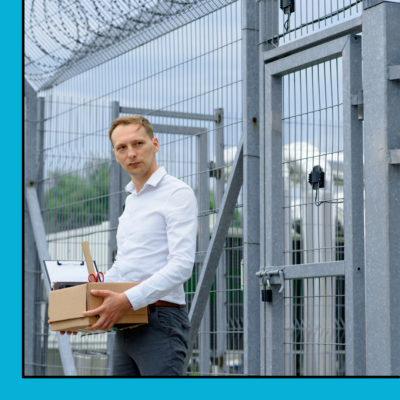The following is from Carrie Montgomery, Tomás Vargas, and Dan Jennings, experts on the subject of the formerly incarcerated returning to society.
 Each year, more than 600,000 individuals are released from state and federal prisons. Another 9 million cycle through local jails (https://aspe.hhs.gov/topics/human-services/incarceration-reentry-0).
Each year, more than 600,000 individuals are released from state and federal prisons. Another 9 million cycle through local jails (https://aspe.hhs.gov/topics/human-services/incarceration-reentry-0).
What are the barriers?
One of the primary challenges for returning citizens is finding suitable housing. Many landlords and property managers are hesitant to rent to individuals with a criminal history, making it difficult for them to secure stable and affordable accommodations. This lack of housing options often leads to homelessness or unstable living situations, which can further impede a person’s ability to reintegrate successfully.
Another major barrier is employment. Individuals with a criminal record often face significant challenges in finding jobs due to the stigma associated with their past. Arkansas almost imposed restrictions on raising minimum wages for certain individuals, including those with felony convictions with an amendment proposed to Senate Bill 115 in 2019. These limitations exacerbate the economic difficulties faced by returning citizens, making it harder for them to support themselves and their families.
Furthermore, the existence of occupational licensing barriers presents additional hurdles. Many professions require specific licenses or certifications, which may be denied or revoked based on an individual’s criminal history. This creates obstacles for returning citizens who aspire to pursue certain careers and professional opportunities, limiting their chances for upward mobility and economic stability.
Fines and fees associated with the criminal justice system also pose a significant burden for returning citizens. In many cases, additional fees are added to fines, effectively functioning as predatory lending practices that disproportionately impact individuals with limited financial resources. These financial obligations can quickly become overwhelming, trapping returning citizens in a cycle of debt and making it even more challenging to reintegrate into society.
Moreover, the lack of adequate social support exacerbates the difficulties faced by returning citizens. Many individuals are not adequately prepared or educated on how to navigate the challenges associated with their reentry into society. This lack of guidance leaves them ill-equipped to deal with the emotional, social, and practical issues they encounter, making successful reintegration even more elusive.
Not only do these challenges affect justice-involved individuals, but they affect families equally. Even though significant others and children were not the ones facing the justice system, they must also carry the stigma with them in their communities. Further, as wages and housing are less stable for justice-involved individuals, they are so for their families as well. Children and families with incarcerated parents must not only endure the incarceration, but they must also endure the post-incarceration period. (If the kids are playing with the neighborhood friends and the police show up, how must that feel to have to explain to others what is happening?)
Insights for change coming out of Bridges Out of Poverty / Getting Ahead While Getting Out
In Getting Ahead While Getting Out, investigators learn that they are their own experts. They also learn how to rejoin the middle class, become financially stable, and learn how to identify areas of their life that are under-resourced.
Once the initial three days are thoroughly planned, the focus shifts towards long-term reintegration, where facilitators work closely with inmates to tap into their personal resources. Encouraging them to find role models in career fields they aspire to be a part of is among the strategies. Building higher self-esteem and personal integrity becomes an essential component of this phase, with a clear roadmap provided to achieve these objectives. The emphasis is on nurturing essential life skills that will empower individuals to create a successful and fulfilling life post-incarceration.
Sadly, even though this extremely valuable experience is being had while incarcerated, it can be nearly impossible to use those experiences for benefit right away. Everybody has great ideas to restore incarcerated individuals, but when they are released, it’s almost like they have been forced into their own social class: “felons!” So when investigators create their plan, it considers potential setbacks and offers contingency options in case of adversity.
If we want returning citizens to be successful and not end up a statistic to recidivism, they need the complete Getting Out reentry model. A foundational component is a local or regional Bridges collaborative. Released investigators face insurmountable challenges without this group of interconnected agencies and organizations who have been trained in Bridges Out Of Poverty and engage in collective impact strategies.
Who’s involved in the process of change, and what can they do?
With an active Bridges collaborative, there are several ways in which a community can assist returning citizens in their journey toward successful reintegration:
- Bridging social capital: It is crucial to have individuals within the community who are dedicated to advocating for the rights and needs of returning citizens. These individuals can act as bridges between returning citizens and policymakers, ensuring that their voices are heard and their unique perspectives are considered when shaping policies and programs. By providing a platform for returning citizens to express their experiences and challenges, communities can foster empathy, understanding, and positive change.
- Job placement and federal incentives: Providing returning citizens with work opportunities is crucial for their successful reintegration. Communities can collaborate with local businesses to create job placement programs specifically designed for individuals with criminal records. Additionally, federal bonding programs and work opportunity tax credits can incentivize employers to hire returning citizens by reducing their liability and offering financial benefits.
- Social support networks: Establishing and strengthening social support networks is crucial for returning citizens. Community organizations, faith-based groups, and mentoring programs can offer guidance, mentorship, and emotional support to individuals during their reentry process. These networks can help foster a sense of belonging, reduce isolation, and provide valuable resources for personal and professional growth.
- Fair background check policies: Communities can advocate for fair background check policies that consider the rehabilitative efforts and progress made by returning citizens. Implementing a “seven-year rule,” where certain criminal records are treated similarly to bankruptcy and no longer hinder employment or housing opportunities after seven years, can provide a fresh start and ensure that individuals are not perpetually punished for past mistakes. This might include providing statewide or federal funds allocated to landlords, similar to incentives given to employers, for offering justice-involved individuals a fair chance to secure a safe living environment.
- Restoring voting rights: Restoring voting rights to returning citizens is an essential step toward their full reintegration into society. Communities can support initiatives and advocate for policies that remove voting barriers for individuals with criminal records who have completed their sentences. Ensuring that everyone has a voice in the democratic process promotes a sense of belonging and encourages active civic engagement.
- Implementing commonsense programs inside facilities: Many facilities purchase programs and rely on department staff to implement such programs. In most cases, these programs are not practical solutions for helping inmates understand the outside world as it is currently and how to navigate freedom. Programs inside facilities need to help inmates build real-world, practical skills and not simply theoretical knowledge of the world. Programs such as correctional industries have fallen out of favor for more classroom-based programs.
What are the outcomes?
The outcome of these types of changes is that restored citizens are no longer a hindrance to their communities. Giving our justice-involved community members the tools and opportunities they need to succeed and heal is a benefit to everyone. If they represent such a threat to the public, why aren’t they still in prison?
We need to start asking, How can I come beside this person and help bring them up? not What can we do to pacify this issue and sweep them under the rug?








